Search
Did you mean: Venus?
Summary 
Loading AI-generated summary based on World History Encyclopedia articles ...
Search Results
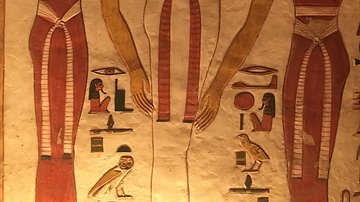
Image
Khnum, Isis & Nephthys
The god Khnum standing between the twin goddesses Isis and Nephthys. From the Tomb of Nefertari in the Valley of the Queens. Thebes, Egypt. 19th Dynasty (1292-1186 BCE).

Image
Ramesses II Offering to Khnum
Wall relief of Ramesses II (r. 1279-1213 BCE) presenting vases of wine to Khnum, the god of the source of the Nile. From the inner part of the Temple of Beit el-Wali, a rock-cut temple in Nubia built by Pharaoh Ramesses II and dedicated to...

Definition
Djoser
Djoser (also known as Netjerikhet, Tosorthos, and Sesorthos, c. 2670 BCE) was the first king of the Third Dynasty of Egypt, reigning for over twenty years. Some sources indicate a king named Sanakht as the first ruler of the Third Dynasty...
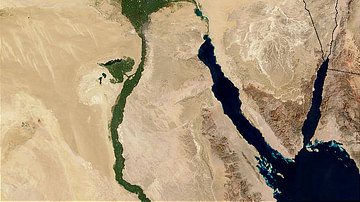
Definition
Nile
The world's longest river, located in Egypt, the Nile flows 4,132 miles (6,650 kilometres) northward to the Mediterranean Sea (a very unusual direction for a river to take). It was considered the source of life by the ancient Egyptians and...
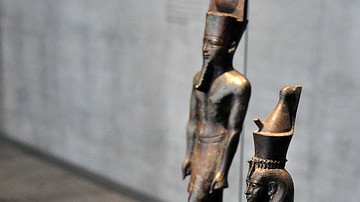
Article
Egyptian Gods - The Complete List
The gods and goddesses of Ancient Egypt were an integral part of the people's everyday lives for over 3,000 years. There were over 2,000 deities in the Egyptian pantheon, many whose names are well known - Isis, Osiris, Horus, Amun, Ra, Hathor...

Image
Stela of Ptolemy IX & Cleopatra III
Two thirds of this stela were lost due to reuse as building material. It documents a royal visit to Elephantine. Ptolemy IX and Cleopatra III, his mother and co-regent, granted privileges to the priests of Khnum, a local ram god. The scene...
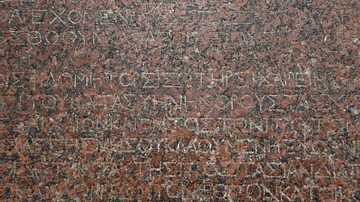
Image
Detail of Stela of Ptolemy IX & Cleopatra III
Greek texts were incised on this granite stela. It documents a royal visit to Elephantine. Ptolemy IX and Cleopatra III, his mother and co-regent, granted privileges to the priests of Khnum, a local ram god. There are hieroglyphic inscriptions...
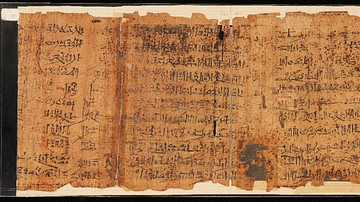
Article
The Admonitions of Ipuwer
The Admonitions of Ipuwer (also known as The Papyrus Ipuwer and The Admonitions of an Egyptian Sage) is a literary text dated to the Middle Kingdom of Egypt (2040-1782 BCE). The only extant copy of the work, preserved on the Papyrus Leiden...
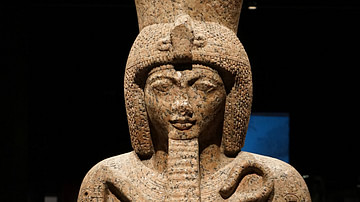
Image
Statue of Ramesses II
This granite statue of Ramesses II was discovered at the Temple of Khnum, Elephantine, Egypt (1280 BCE). Ramesses II was a very successful ruler between around 1279-1213 BCE. Here he holds a crook and flail and wears a double crown, symbolising...
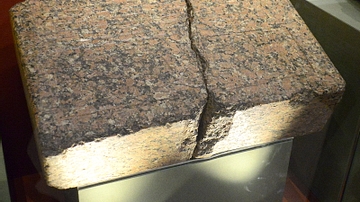
Image
Red Granite Offering Table of King Senusret III
Offerings were placed upon a reed mat, reproduced in stone as the offering tables of the Dynastic periods. On this royal example, the hieroglyph hetep "offering" is written on the surface. The sign comprises a bound reed mat with a domed...